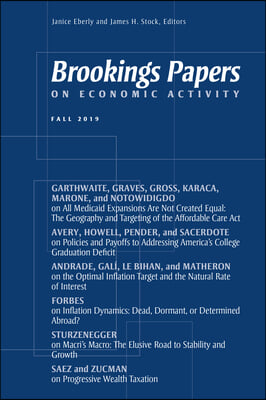2019冠状病毒病衰退期间的临时失业和劳动力市场动态
IF 2.8
3区 经济学
Q1 ECONOMICS
引用次数: 58
摘要
摘要:本文建立了一个包含临时失业的搜索匹配模型,并应用该模型研究了新冠肺炎疫情下美国劳动力市场的动态变化。我们使用2001-2019年当前人口调查的面板数据校准了模型,发现基于模型的求职率与整个样本期间和截至2020年7月的样本外观察到的求职率相匹配。我们还发现,贝弗里奇曲线表现良好,一旦我们使用校准模型来调整失业人口构成的变化,2020年市场紧张程度几乎没有变化。然后我们用这个模型来预测未来18个月的失业趋势。在一系列关于失业和劳动力需求的假设下,与不区分暂时性和永久性失业的模型以及与专业和学术预测相比,我们的模型预测了更快的复苏。为了使对失业率的专业预测合理化,在接下来的几个月里,空缺率、离职率和临时解雇工人的召回率的某种组合必须大幅恶化。本文章由计算机程序翻译,如有差异,请以英文原文为准。
Temporary Unemployment and Labor Market Dynamics during the COVID-19 Recession
ABSTRACT:This paper develops a search-and-matching model that incorporates temporary unemployment and applies the model to study the labor market dynamics of the COVID-19 recession in the United States. We calibrate the model using panel data from the Current Population Survey for 2001–2019, and we find that the model-based job-finding rates match observed job-finding rates during the entire sample period and out of sample up through July 2020. We also find that the Beveridge curve is well behaved and that there is little change in market tightness in 2020 once we use the calibrated model to adjust for changes in the composition of the unemployed. We then use the model to project the path of unemployment over the next eighteen months. Under a range of assumptions about job losses and labor demand, our model predicts a more rapid recovery compared to a model that does not distinguish between temporary and permanent unemployment and compared to professional and academic forecasts. In order to rationalize the professional forecasts of the unemployment rate, some combination of the vacancy rate, the job-separation rate, and the recall rate of workers on temporary layoff must deteriorate substantially in the next several months.
求助全文
通过发布文献求助,成功后即可免费获取论文全文。
去求助
来源期刊

Brookings Papers on Economic Activity
ECONOMICS-
CiteScore
10.10
自引率
0.00%
发文量
12
期刊介绍:
The Brookings Papers on Economic Activity (BPEA) is a semi-annual academic conference and journal that pairs rigorous research with real-time policy analysis to address the most urgent economic challenges of the day. Working drafts of the papers are presented and discussed at conferences typically held twice each year, and the final versions of the papers and comments along with summaries of the general discussions are published in the journal several months later. The views expressed by the authors, discussants and conference participants in BPEA are strictly those of the authors, discussants and conference participants, and not of the Brookings Institution. As an independent think tank, the Brookings Institution does not take institutional positions on any issue.
 求助内容:
求助内容: 应助结果提醒方式:
应助结果提醒方式:


